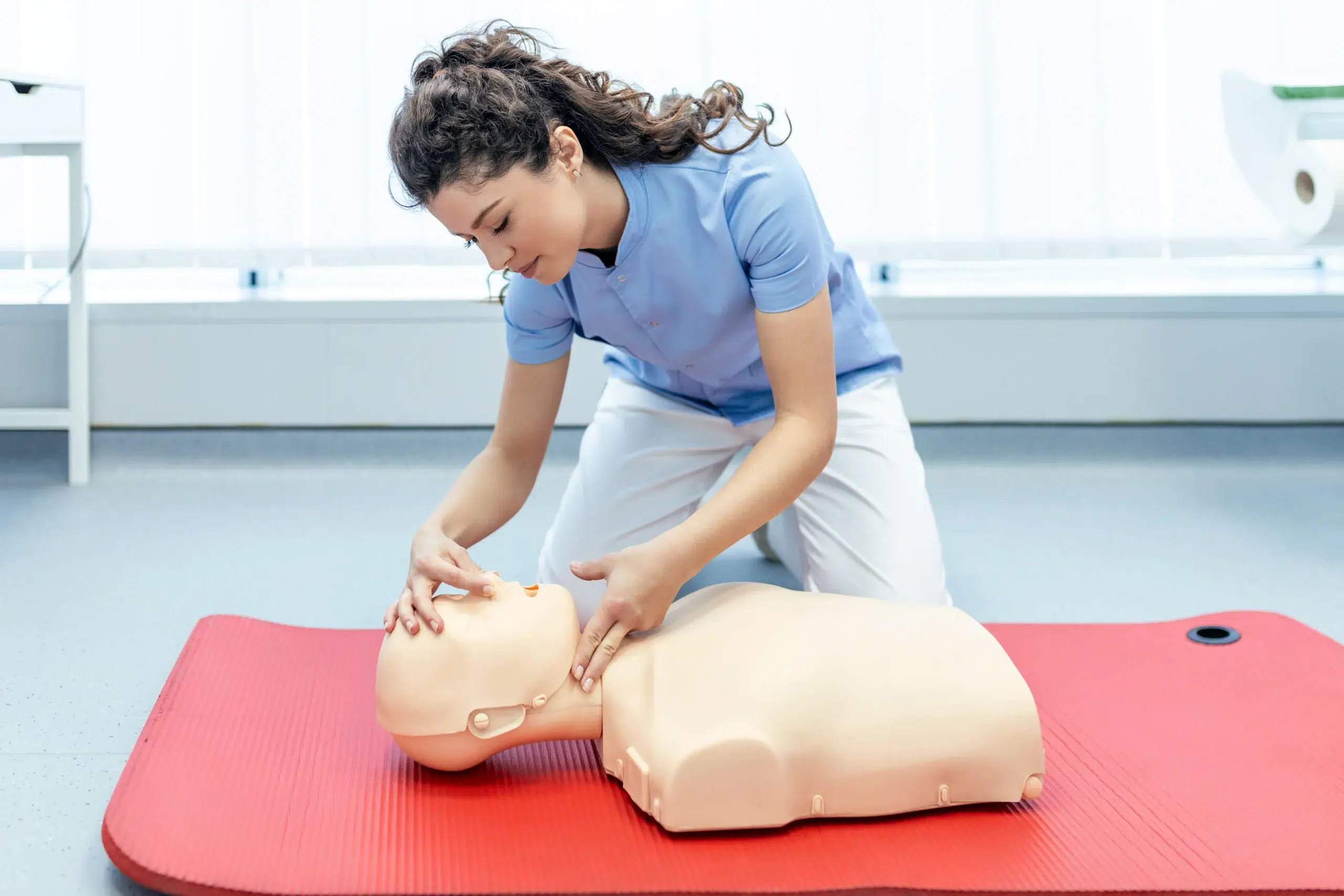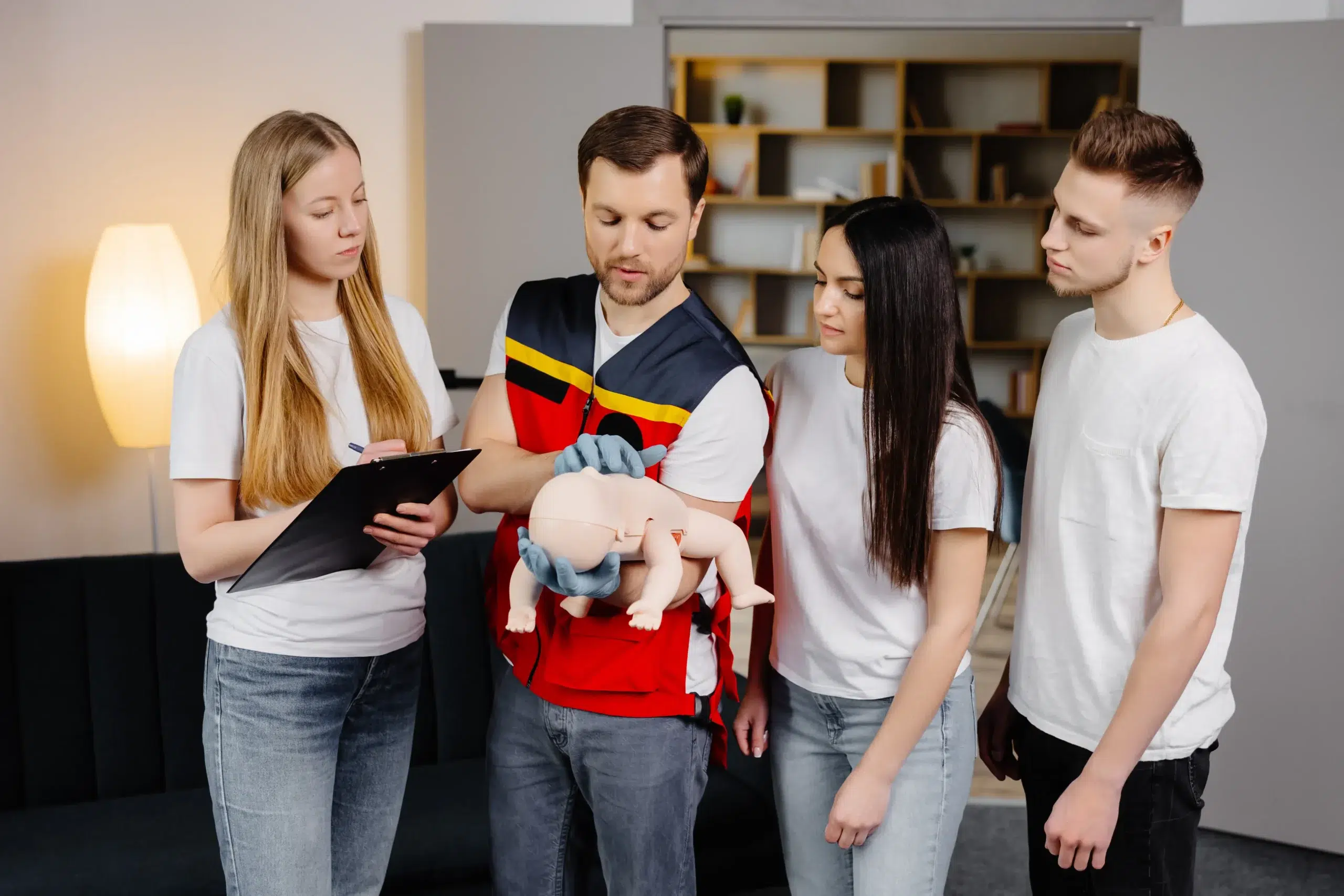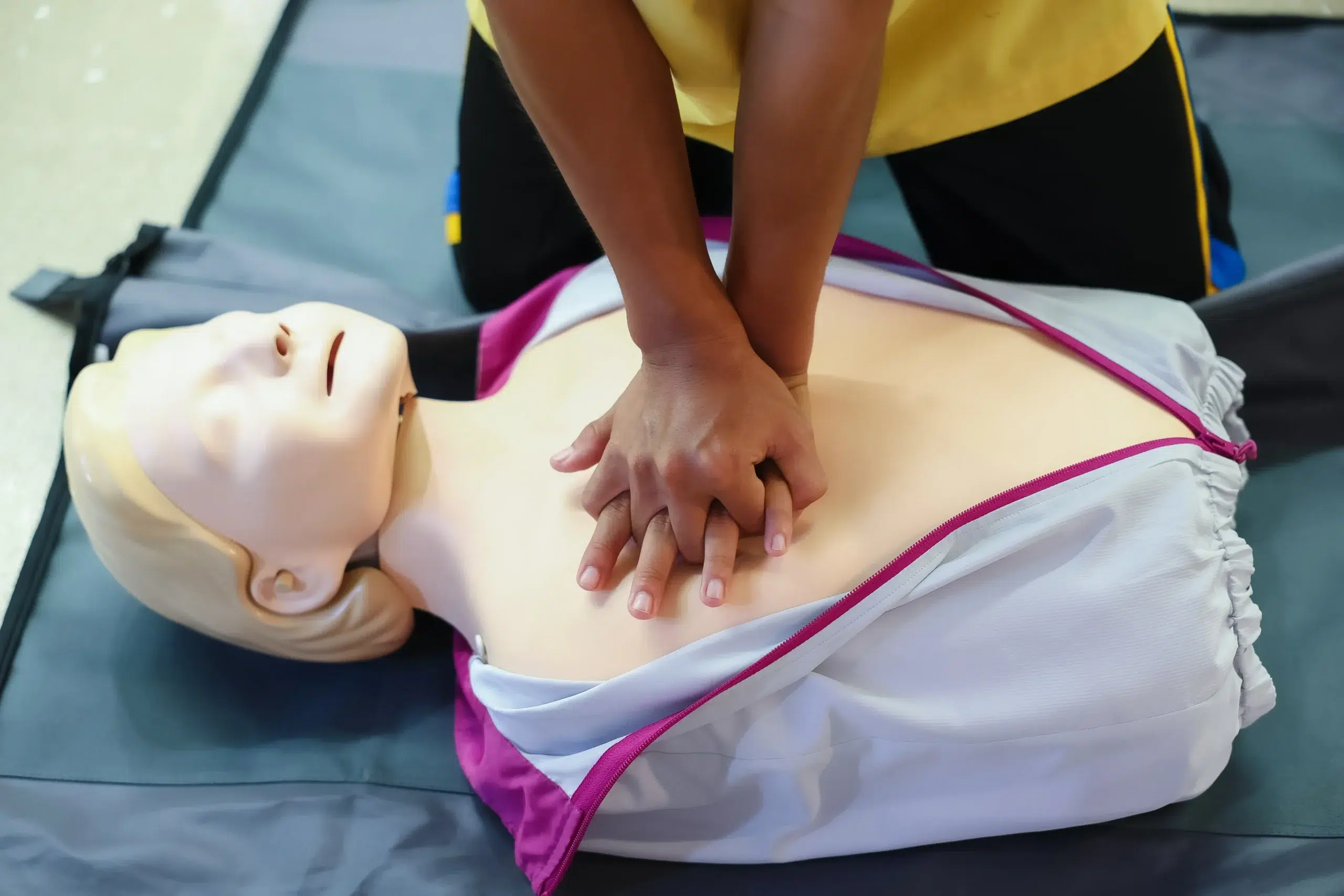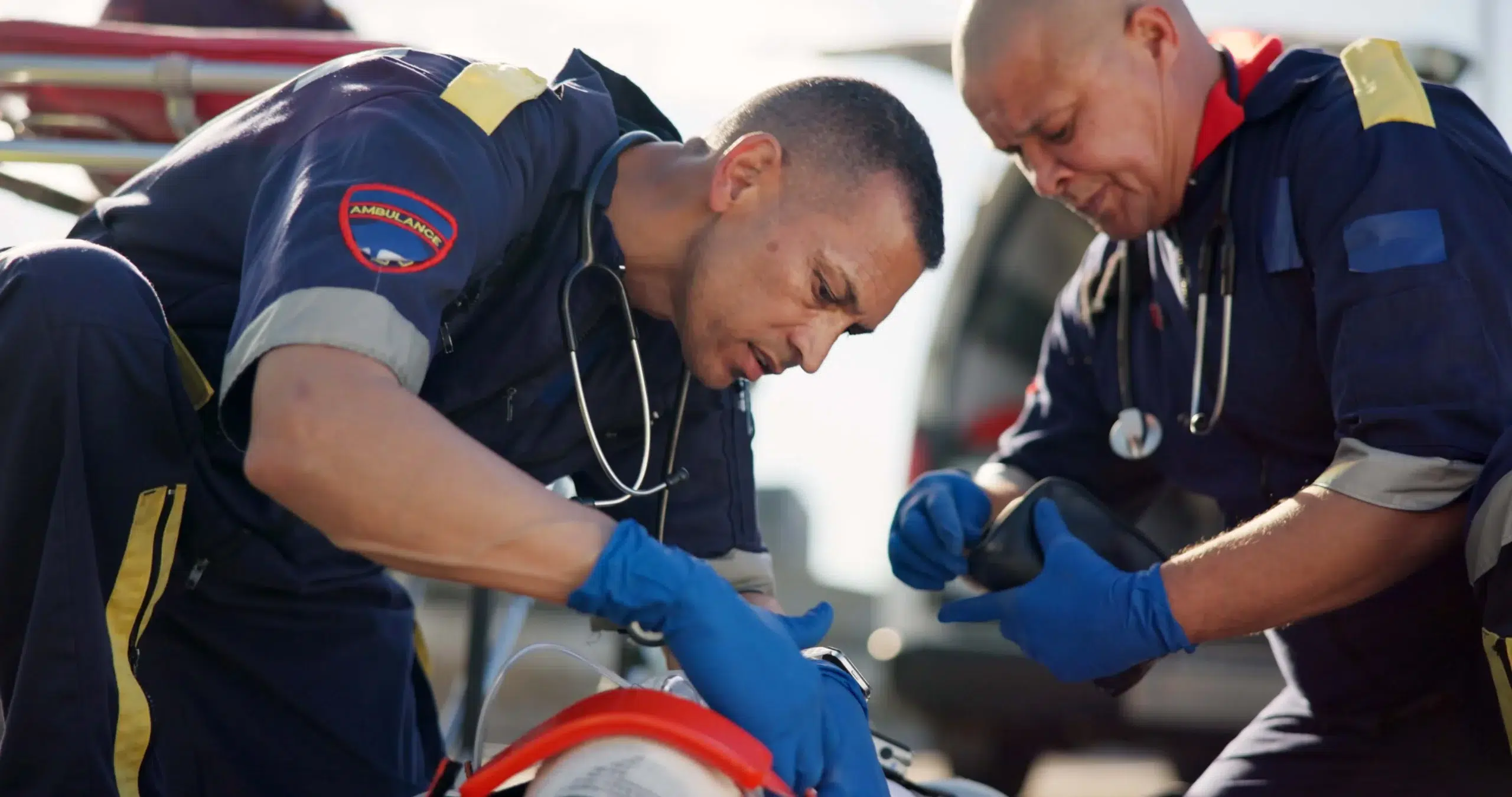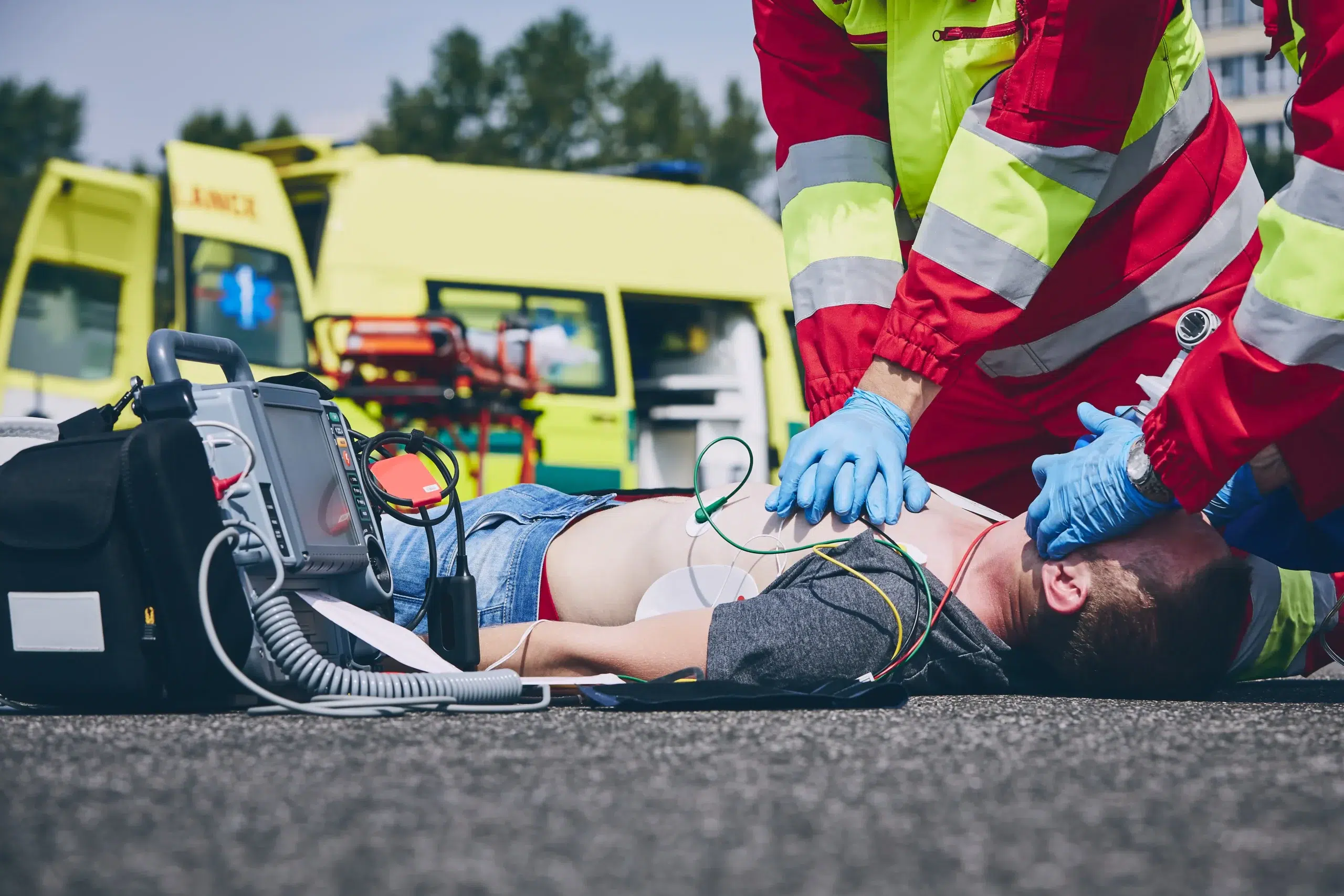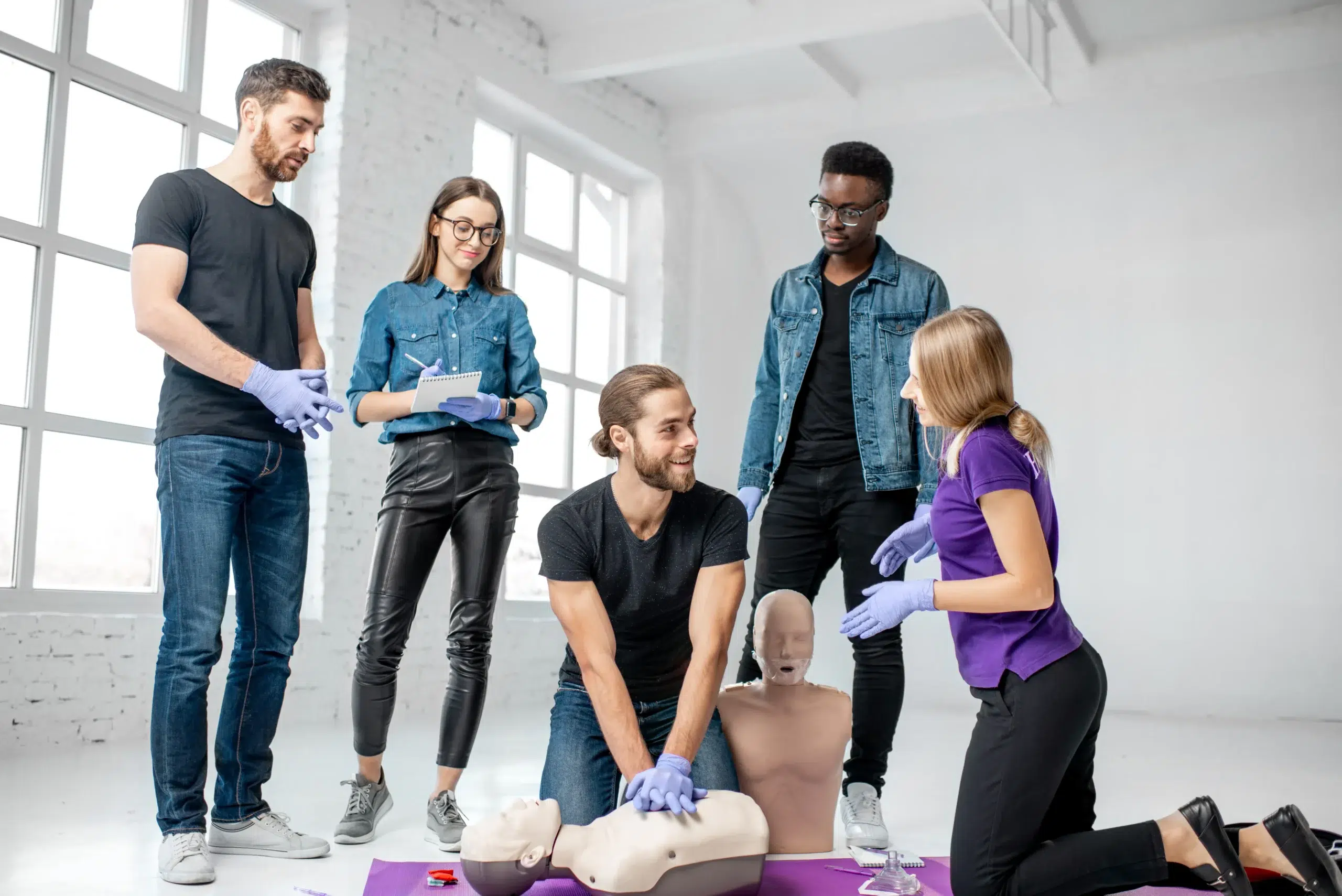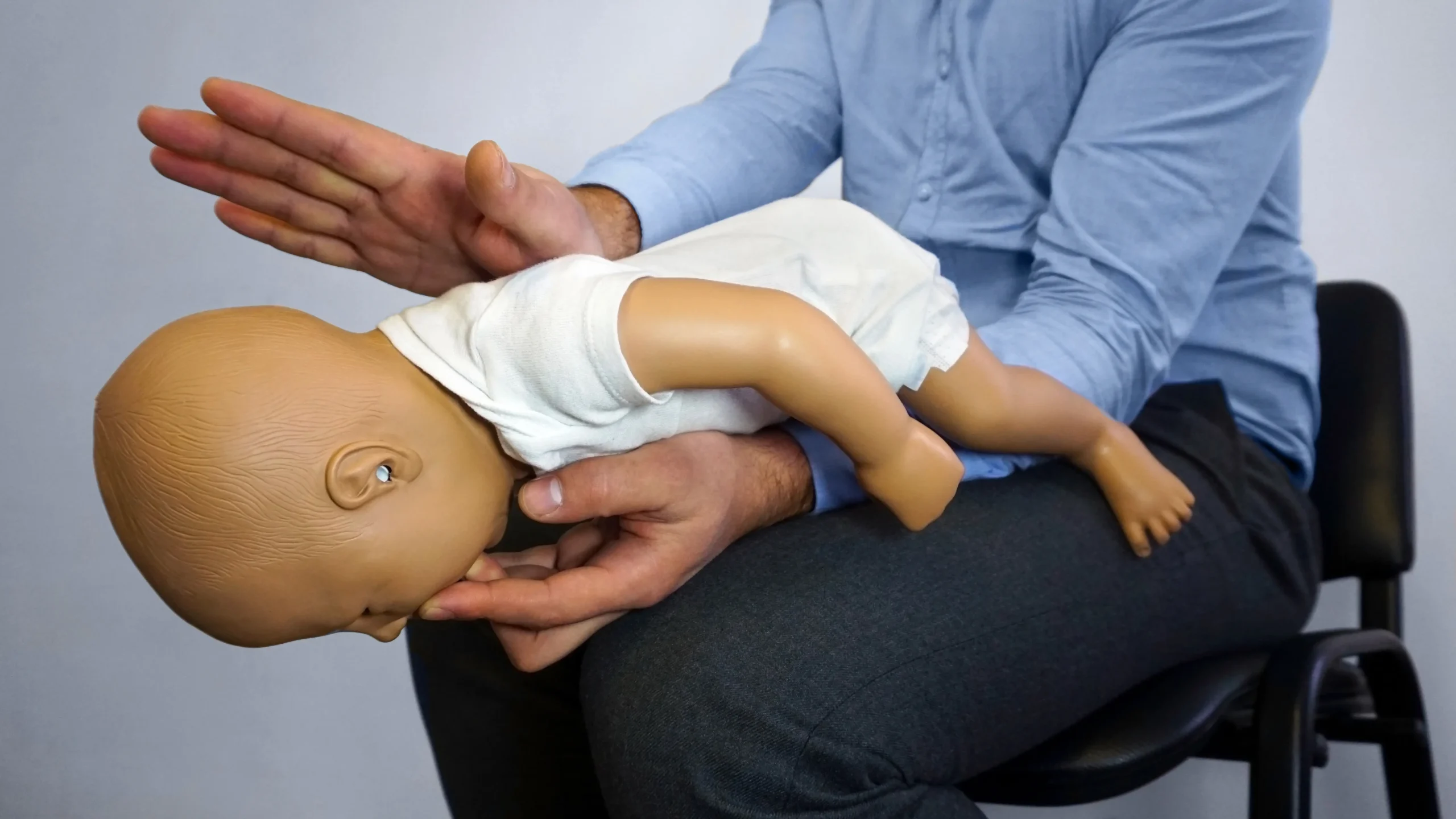Empower yourself with the knowledge and skills to save a life. This guide explores the importance of basic life support (BLS) in San Jose, offering valuable insights into training options, certification processes, and the long-term benefits of acquiring these essential skills. Whether you’re a healthcare professional, a caregiver, or simply someone who wants to be prepared for emergencies, understanding BLS is a crucial step. We’ll delve into the key components of BLS, address common misconceptions, and provide a comprehensive overview of training providers in San Jose, helping you make informed decisions about your training journey.
Key Takeaways
- BLS certification is a powerful tool for anyone: It equips you with the skills to respond to emergencies like cardiac arrest and choking, making a real difference in critical situations. It’s valuable for healthcare professionals and anyone who wants to be prepared.
- Choosing the right BLS course fits your needs: Explore different learning formats – in-person, hybrid, or online components – to match your schedule and learning style. Consider factors like cost, location, and provider reputation to find the best fit.
- Preparing for your BLS course maximizes your learning: Purchase the BLS Provider Manual and familiarize yourself with key concepts like DRSABCD and the BLS algorithm beforehand. This preparation allows you to focus on hands-on skills practice during the course.
What is Basic Life Support (BLS)?
Basic Life Support (BLS) is crucial for saving lives during emergencies, especially sudden cardiac arrest. It involves providing chest compressions (CPR), rescue breaths, and possibly using an AED (Automated External Defibrillator). These combined actions help circulate oxygenated blood to vital organs until professional medical help arrives. Learning BLS can give you the confidence to respond effectively in these critical situations.
Key BLS Components
BLS certification teaches essential, life-saving skills for responding to emergencies like cardiac arrest, choking, and severe bleeding. Certification courses cover CPR techniques for adults, children, and infants, how to use an AED, administering emergency oxygen, and controlling bleeding. High-quality BLS training also emphasizes the importance of teamwork, clear communication, and a systematic approach during emergencies.
Who Needs BLS Training?
BLS certification is often required for jobs involving public safety or childcare, such as healthcare providers, athletic coaches, teachers, daycare workers, lifeguards, and police officers. However, anyone can benefit from BLS training. Knowing these skills can empower you to assist family members, friends, or even strangers during a medical crisis. Consider getting your CPR certification if you’re interested in learning these valuable skills.
Common BLS Misconceptions
One common misconception is that BLS training is only for healthcare professionals. This isn’t true. BLS certification training is valuable for anyone and includes using automated external defibrillators (AEDs), basic airway management, and techniques for assisting someone who is choking. Another myth is that BLS is too complicated to learn. While comprehensive, BLS courses are designed to be accessible and easy to understand, regardless of your background. Safety Training Seminars prioritizes making these life-saving skills accessible to everyone.
Top BLS Training Providers in San Jose
Finding the right BLS training provider is essential, so we’ve compiled a list of reputable options in San Jose. Whether you’re a healthcare professional maintaining your credentials or just starting out, this list will help you find the best fit.
Safety Training Seminars
Safety Training Seminars offers AHA-certified courses in CPR, BLS, ACLS, and PALS, plus First Aid and EMSA certifications. They have a variety of renewal options, including the RQI program for healthcare providers and renewal courses for certifications like BLS, ACLS, and PALS. Their flexible scheduling and low price guarantee make them a convenient and budget-friendly choice. Serving Newark, Fremont, and San Jose, they offer classes in downtown San Jose and provide discounted group rates for workplaces or groups. You can find their BLS courses and schedule directly through their online calendar.
American Red Cross
The American Red Cross is a well-known provider of BLS training. Their San Jose chapter offers BLS certification and renewal courses, teaching essential skills like CPR and airway management. They offer in-person classes and a blended learning option combining online coursework with an in-person skills session.
CPR Training Center
The CPR Training Center in San Jose offers AHA-certified BLS classes. Their courses run approximately 3.5 hours and concentrate on practical skills development in a classroom setting. You’ll receive your AHA BLS certification upon completing the course.
San Jose CPR Classes
Safety Training Seminars also provides comprehensive CPR, BLS, ACLS, and PALS courses in downtown San Jose. Their training covers all the fundamentals of CPR and first aid, ensuring a thorough understanding of these essential skills.
BLS Course Formats and Duration
Finding the right BLS course format depends on your learning style and schedule. Let’s break down the common options available in San Jose.
In-Person Training
In-person BLS training offers a hands-on learning experience. You’ll practice skills like CPR and using an AED in a real-world setting with certified instructors. This format allows for immediate feedback and personalized guidance. In-person classes are a great option for those who prefer direct interaction and learn best in a traditional classroom setting. Organizations like the American Red Cross in San Jose offer in-person BLS certification courses. For those in the Newark, Fremont, or San Jose area, Safety Training Seminars provides convenient in-person training options.
Online Options
While convenient, it’s crucial to understand that online-only BLS certifications are generally not accepted by hospitals and many healthcare organizations. These organizations typically require a hands-on skills assessment component. If your goal is to work in a hospital setting, be sure to choose a course that includes in-person skills verification. Check with your employer or desired workplace for their specific requirements before enrolling in an online-only course. CPR Training Center clarifies the limitations of online-only certifications.
Hybrid Learning
For those balancing busy schedules, hybrid learning offers a flexible approach. This format combines online coursework with an in-person skills session. You can complete the online portion at your own pace, then attend a shorter in-person session to demonstrate your skills and receive your certification. This blended learning option is ideal for those who want the convenience of online learning with the benefits of hands-on practice. The CPR Training Center is one provider that offers this blended learning format. Consider this option if you’re looking for a way to fit BLS training into a packed schedule.
Time Commitment and Scheduling
BLS certification is typically valid for two years. Renewal courses are available for those whose certification is nearing expiration. The time commitment for initial certification varies depending on the format and provider. In-person BLS courses can often be completed in as little as 4.5 hours, while hybrid courses may require less in-person time. Check with specific providers like Safety Training Seminars for their course schedules and durations. Remember to factor in travel time and any pre-coursework requirements when planning your training. If you’re looking for the best value, explore group discounts offered by some providers.
Cost and Value of BLS Training
Getting your BLS certification is an investment in your skills and your future. But how much does it cost in San Jose, and what kind of value does it really offer? Let’s break it down.
Average San Jose Pricing
In San Jose, you can expect to pay around $70 for BLS certification. Prices vary between providers, so compare a few different training centers before committing. Check with places like the CPR Training Center to get a sense of the going rate. Remember, Safety Training Seminars offers a low price guarantee, so you can be confident you’re getting a competitive price.
Group Discounts and Special Offers
Training with friends or colleagues? Ask about group discounts. Many providers, including Safety Training Seminars, offer reduced rates for groups, making it more economical to train together. See our group discounts page for more details.
Long-Term Benefits of BLS Skills
The real value of BLS training extends beyond the certification cost. You’ll gain essential skills to respond to medical emergencies like cardiac arrest and choking. These skills can make a profound difference in someone’s life. A BLS certification also strengthens your resume, especially in healthcare-related fields. Avive AED discusses the importance of BLS certification and how it enhances your qualifications. It shows potential employers your commitment to safety and preparedness, a valuable asset in any profession.
BLS Certification Process
Getting your BLS certification is straightforward and empowers you with life-saving skills. Here’s what the process looks like:
What to Expect During Training
BLS training covers essential techniques like CPR, recognizing and responding to life-threatening emergencies, using an AED, and relieving choking. You’ll learn how to help someone who’s stopped breathing or has a blocked airway. Expect a combination of instruction, demonstrations, and hands-on practice. At Safety Training Seminars, we emphasize a supportive learning environment where you can feel comfortable asking questions and mastering these critical skills. In-person BLS classes can be as short as 4.5 hours, allowing you to get certified efficiently.
Certification Validity and Renewal
Your BLS certification is valid for two years. This timeframe ensures your skills and knowledge remain current with the latest American Heart Association guidelines. As your certification nears its expiration date, you can easily enroll in a renewal course to maintain your credentials. You’ll receive your AHA BLS certification the same day you complete the class, allowing you to put your new skills to use immediately or fulfill requirements for your job. BLS certification courses often cover adult, child, and infant CPR.
Employer Recognition
BLS certification is a highly respected credential, especially in healthcare and related fields. Employers recognize the value of having trained professionals who can respond effectively in medical emergencies. Holding a current BLS certification demonstrates your commitment to patient safety and high-quality care. It can also be a valuable asset when applying for jobs or seeking career advancement. For those seeking CPR and First Aid certification, we offer combined courses to meet your specific needs. We also offer a low price guarantee to ensure our training is accessible to everyone.
Choosing the Right CPR Certification
Knowing which CPR certification is right for you can feel overwhelming with so many options. This section breaks down the key differences between CPR and BLS certifications and helps you choose the best fit. We’ll cover everything from basic CPR training for community members to advanced certifications tailored for healthcare professionals. At Safety Training Seminars, we offer a range of American Heart Association (AHA) certified courses to meet your specific needs.
BLS vs. Standard CPR
CPR (Cardiopulmonary Resuscitation) provides fundamental life-saving skills, focusing on chest compressions and rescue breaths for individuals experiencing cardiac arrest. It’s a great starting point for anyone—parents, teachers, or community members—interested in learning these essential techniques. BLS (Basic Life Support) certification builds upon CPR and adds advanced techniques for managing cardiac arrest, respiratory distress, and airway obstructions. BLS is designed for healthcare professionals, first responders, and anyone working in a healthcare setting. The key difference? BLS provides a broader skill set for professionals responding to medical emergencies, while CPR offers foundational knowledge for anyone wanting to help in a crisis.
Tailor Your Choice to Your Needs
Think about your current situation and career goals when choosing between CPR and BLS. BLS certification equips you with comprehensive skills to respond to various emergencies, from cardiac arrest and choking to bleeding control. It’s a valuable asset for healthcare professionals and anyone seeking to assist in emergencies. While anyone can pursue BLS certification, it’s often a job requirement for roles in public safety, healthcare, childcare, education, and coaching. If you’re considering a career in these fields or want to be prepared for any emergency, BLS training is a smart choice. For those simply wanting to learn basic life support techniques, standard CPR training may suffice.
Industry-Specific Requirements
Certain industries mandate specific certifications. Healthcare providers, for example, typically require BLS certification as a baseline. If you’re unsure about the requirements for your profession, check with your employer or professional organization. At Safety Training Seminars, we offer various certification and renewal options, including the RQI program for healthcare providers needing to refresh their skills. Renewal courses for certifications like BLS, ACLS, and PALS are also available. We also offer discounted group rates for businesses looking to certify their teams, and our low price guarantee ensures accessible training for everyone. We’re here to help you find the right course for your needs and budget.
Prepare for Your BLS Course
Getting ready for your BLS course doesn’t have to be stressful. With a little preparation, you can walk into class feeling confident and ready to learn these vital lifesaving skills. Here’s what you need to know:
Prerequisites and Materials
One of the best things about BLS certification is that there aren’t any strict prerequisites. As the Avive AED blog points out, BLS certification teaches essential skills for responding to emergencies, making it valuable for both healthcare professionals and anyone who wants to be prepared to help. Before class, purchase a BLS Provider Manual. You can usually find these as an eBook or paperback for around $9.99 from various training centers, including Safety Training Seminars.
Tips for Success
A little planning goes a long way. The CPR Training Center recommends checking their website for the most up-to-date class schedule and registering in advance. If you’re short on time, see if a blended learning option—partially online and partially in-person—works for your schedule. Before your course, familiarize yourself with the DRSABCD action plan and the BLS algorithm. These are fundamental concepts you’ll cover, and a preview will give you a head start. As Skills Training Group emphasizes, taking a BLS training course equips you with the skills to save lives, so preparing beforehand can make a real difference.
Additional Resources and Support
At Safety Training Seminars, we offer several ways to keep your skills current. Our RQI (Resuscitation Quality Improvement) program is a great option for healthcare providers looking for a flexible and convenient way to renew their BLS certification. We also offer renewal courses for other certifications like ACLS and PALS. You can find more information about our commitment to providing accessible training and our low price guarantee on our website. We’re here to support you throughout your training, so don’t hesitate to contact us with any questions.
Related Articles
- BLS Courses in Fremont: Your Complete Guide – Newark CPR Classes
- BLS for Healthcare Providers in Newark: A Practical Guide – Newark CPR Classes
- BLS Courses in Newark: Your Complete Guide – Newark CPR Classes
- BLS Courses in San Jose: The Complete Guide – Newark CPR Classes
Frequently Asked Questions
Is BLS certification right for me even if I don’t work in healthcare?
Absolutely! While often a requirement for healthcare professionals, BLS training equips anyone with valuable skills to respond to medical emergencies. Knowing how to perform CPR, use an AED, and relieve choking can make a real difference in any situation, whether at home, work, or out in the community. It empowers you to act quickly and confidently when every second counts.
What’s the difference between CPR and BLS training?
CPR focuses on the core techniques of chest compressions and rescue breaths for someone in cardiac arrest. BLS builds upon CPR, adding more advanced skills like using an AED, managing airways, and working as part of a team during a medical crisis. Think of CPR as the foundation, while BLS provides a broader skillset for those likely to respond to emergencies regularly, like healthcare providers and first responders.
How long does BLS certification last, and how do I renew it?
BLS certification is typically valid for two years. This timeframe ensures your skills and knowledge align with the latest guidelines. Renewal courses are readily available, often shorter than the initial certification course, and help you refresh your skills and stay up-to-date. Some providers also offer programs like RQI, which provides a more flexible renewal option for healthcare professionals.
What can I expect during a BLS course?
BLS courses combine instruction, demonstrations, and hands-on practice. You’ll learn how to recognize and respond to life-threatening emergencies, perform CPR on adults, children, and infants, use an AED, and provide basic airway management. The goal is to build your confidence and competence in these essential skills. Most courses also emphasize teamwork and clear communication, vital aspects of emergency response.
How much does BLS certification cost, and are there any ways to save?
The cost of BLS certification varies, but it’s a worthwhile investment in life-saving skills. Many providers offer group discounts, making it more affordable to train with friends, family, or colleagues. Some training centers also have a low-price guarantee, ensuring you get the best value for your training. Check with different providers in your area to compare prices and find the best fit for your budget.
